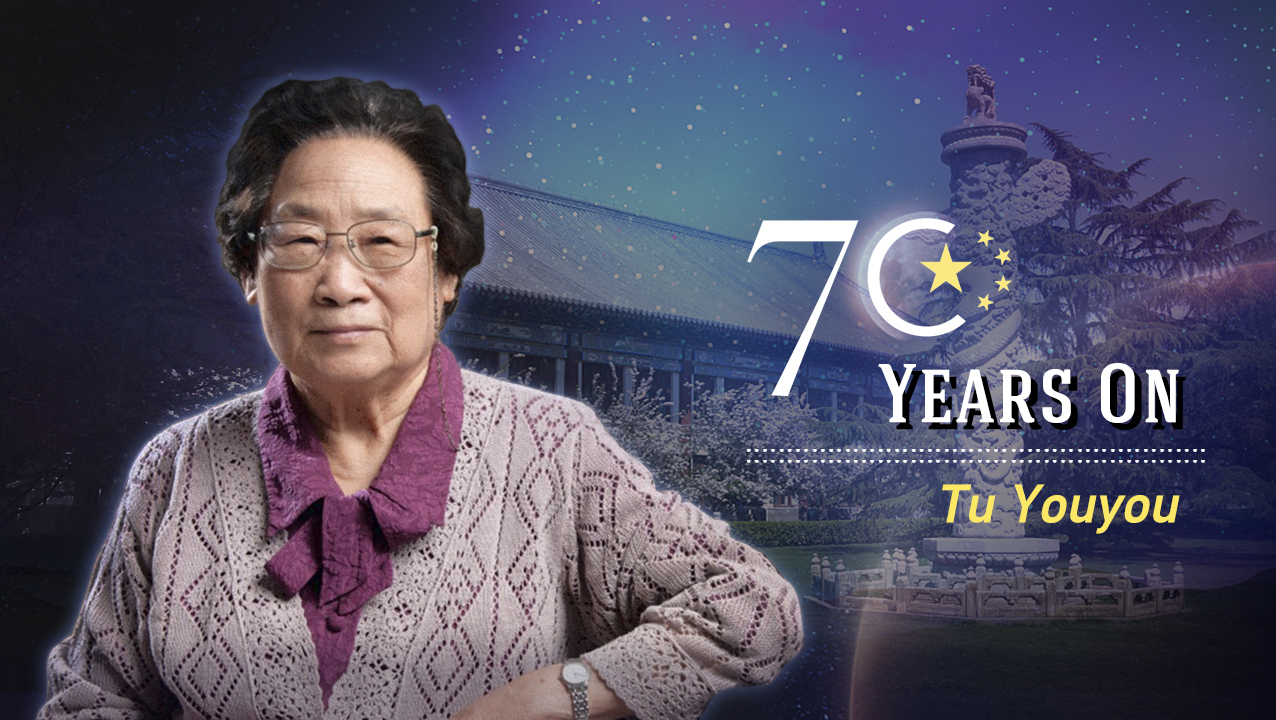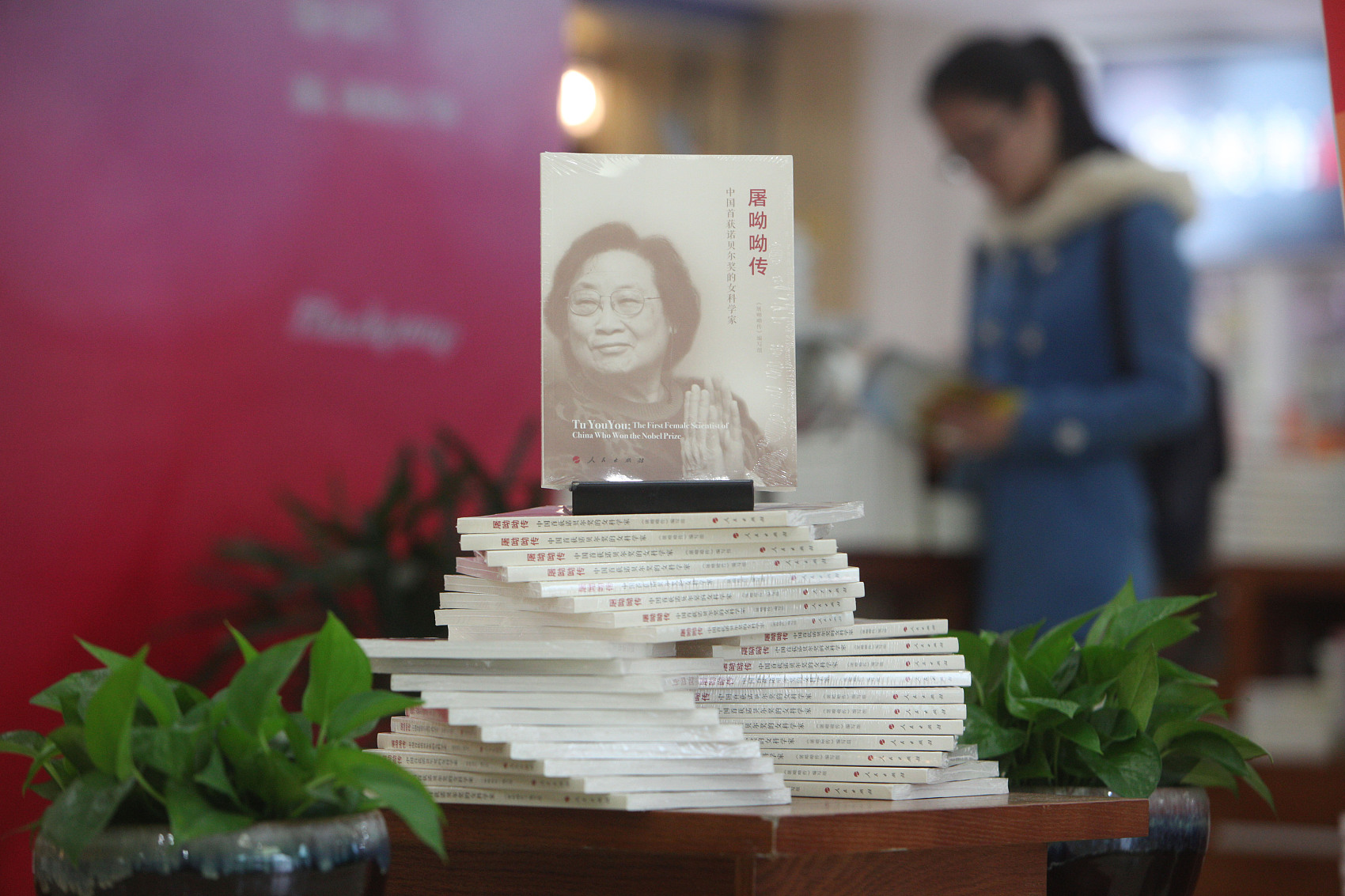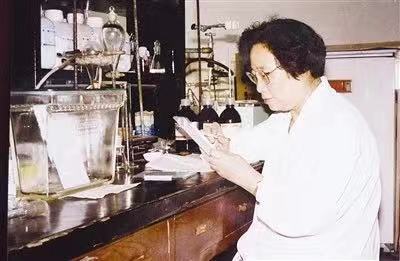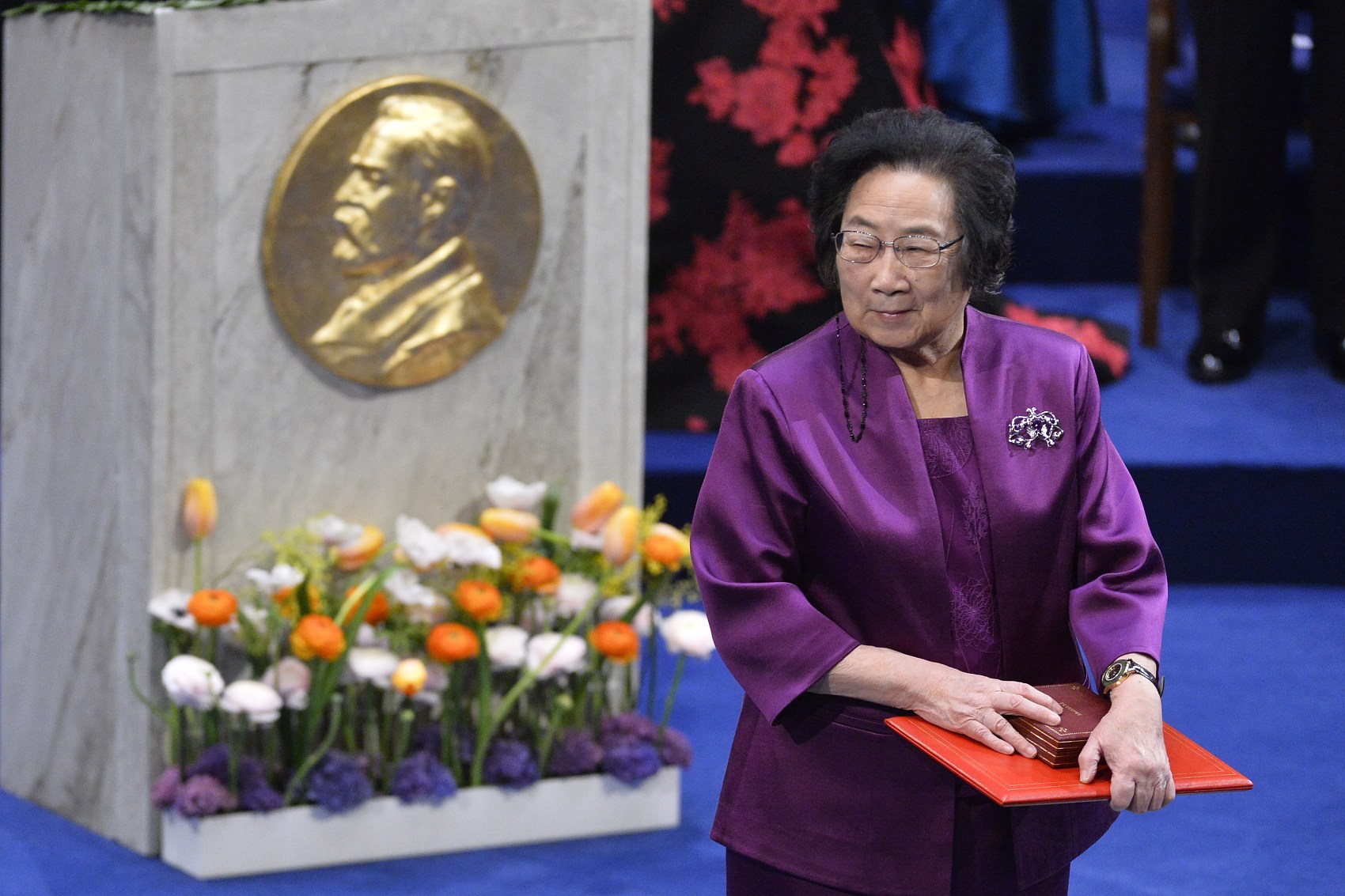Peking University, Oct. 10, 2019: Tu Youyou, a Chinese scientist or more specifically, phytochemist – a specialist in studying the chemistry of plants, won the Nobel Prize in Physiology or Medicine in 2015. She is the first female Mainland Chinese scientist to receive a Nobel Prize in the field of science, and she achieved it without a medical degree. After years of meticulousness, perseverance, and dedication, she discovered artemisinin and dihydroartemisinin (qinghaosi), which are the chemical compounds used to treat malaria. However, according to Tu Youyou, her greatest achievement is not winning the Nobel Prize, but rather having the opportunity to demonstrate the benefits of traditional Chinese medicine on the international stage.

Tu Youyou
Early Years
Tu was born on December 30, 1930 in Ningbo, Zhejiang province, China. Her family name was highly recognized. Thus, she had the opportunity to attend the best schools in the area. However, at the age of 16, she suffered from tuberculosis, which forced her to take a two-year break from school to receive treatment. Her setback prompted her to pursue an education in medicine and in 1951, she was accepted to Peking University. In the biography, Tu Youyou, published by People’s Literature Publishing House, discusses her decision-making processes while she studied at Peking University. The biography reveals that “she felt lucky about having a chance to further her education after high school as a girl in that unenlightened period”. Between the years 1951-1955, Tu attended Peking University Medical School/Beijing Medical College. At this institution, she learned to classify medicinal plants, extract bioactive chemicals, and determine their chemical structures. Her educational experiences and strong interest in medicine served as a foundation for her success.

Tu and her biography
Project 523 Research Group
The early 1960s was marked by a major threat of malaria. In many parts of the world, plasmodium falciparum was becoming increasingly resistant to chloroquine—the antimalaria drug during this time. The resurgence of malaria posed a major global challenge, which hit its peak during the Vietnam War. As a result, more than 200 million people suffered worldwide. As the number of casualties increased, so did the North Vietnamese government’s desire to find a cure. The North Vietnamese governmental leaders approached Chinese leader Mao Tse Tung to request assistance. In light of this, in 1967, a covert operation--Project 523—was launched in China to develop a remedy for malaria, and “to keep (the) allies’ troops combat-ready”. More than 200 scientists were recruited, including Tu Youyou. Her research for developing an antimalarial drug began in 1969. Eventually, she was appointed as the head of Project 523. After her appointment, she was sent to Hainan Island, an area of a malaria outbreak, to conduct further research.
Tu was inspired by traditional Chinese medicine and began her research by screening traditional Chinese herbs in hopes of identifying a potential anti-malarial ingredient. Her team examined 640 transcriptions from a list of 2,000 traditional Chinese recipes. They extracted and tested 380 herbal compounds. However, after repeated trials, the results were far from satisfactory. From this moment of disappointment, Tu realized that the anti-malarial compound they were trying to extract might have been damaged due to the high temperature of the boiling water. Artemisia annua also known as qinghao, was described consistently in the fourth-century Chinese physician book Zhouhou Beiji Fang (The Handbook of Prescriptions for Emergencies) as a treatment for malarial fever. After careful analysis of the handbook, Tu’s research team changed their extraction method from using fresh leaves under low temperature to ether-based solvent, which boils at an even lower temperature. Eventually, they were able to extract a highly effective anti-malarial compound, one with a 100 percent success rate. The compound was later labeled as artemisinin, or qinghaosu in Chinese. In order to verify the strength of artemisinin, a human trial was necessary. Tu volunteered to be the first human recipient. In 1973, in an attempt to confirm the carbonyl group in artemisnin, Tu was able to synthesize an even more powerful and stable anti-malarial drug-- dihydroartemisinin.

Tu in the lab
Beyond Borders: Tradition and Modernity
Tu and her research team gained an abundance of wisdom from analyzing the Zhouhou Beiji Fang. Tu represents “indigenous” Chinese culture. She was born, educated, and completed her research exclusively in China. In addition to her scientific achievements, Tu is admired by traditional Chinese standards. According to Confucius, she conforms to be the type of person “who aims to be of complete virtue, and in her food does not seek to gratify her appetite, nor in her dwelling place does she seek the appliances of ease; she is earnest in what she is doing, and careful in her speech.”
But, even with the discovery of artemisin, things were not easy. In the 1970s, many pharmaceutical factories ceased production, sanitization was limited, and boiling equipment was scarce. However, to continue clinical research, a large amount of artemisinin was required. The challenges tested the state’s patience as tens of thousands of people were infected with malaria. Under these circumstances, Tu and her team continued to overcome the mounting pressure and discover new ways to conduct their research. The research team collected a large number of artemisia annua leaves from across the country and saturated them in seven large ether tanks. The facility where the ether tanks were located had no ventilation system or protective measures from toxic chemicals and gases. Tu and her team made enormous sacrifices during their research.Working under these conditions was dangerous, and although Tu was able to complete her work, she was ultimately diagnosed with toxic hepatitis. Other research members also suffered. Zhong Lurong had to remove parts of the trachea and lobe; both are connected to the lungs, and Cui Shulian lost her life during experimentation. Even before her death, she did not complain or have any regrets. But, to this day, Tu still feels responsible for her death.
The discovery of artemisinin and dihydroartemisinin proved to be the turning point in the battle against malaria. The compounds were the necessary ingredient for producing anti-malarial drugs, and ultimately saved millions of lives. With this discovery, in 2011, Tu was awarded the Lasker-DeBakey Clinical Medical Research Award. In 2015, she became the first female Mainland Chinese scientist to win the Nobel Prize in Physiology or Medicine. In addition, BBC Icons launched a vote and Tu was elected as one of the only Asian candidates for the title of “scientists of the 20th century”. She was nominated for multiple reasons. First, she was “being a scientist at a risky time in Chinese history”. Second, she was “looking back as well as forward”. Third, she was able to complete her work across a divided world. Furthermore, her name was mentioned alongside other great historical innovators such as Albert Einstein and Marie Curie.
